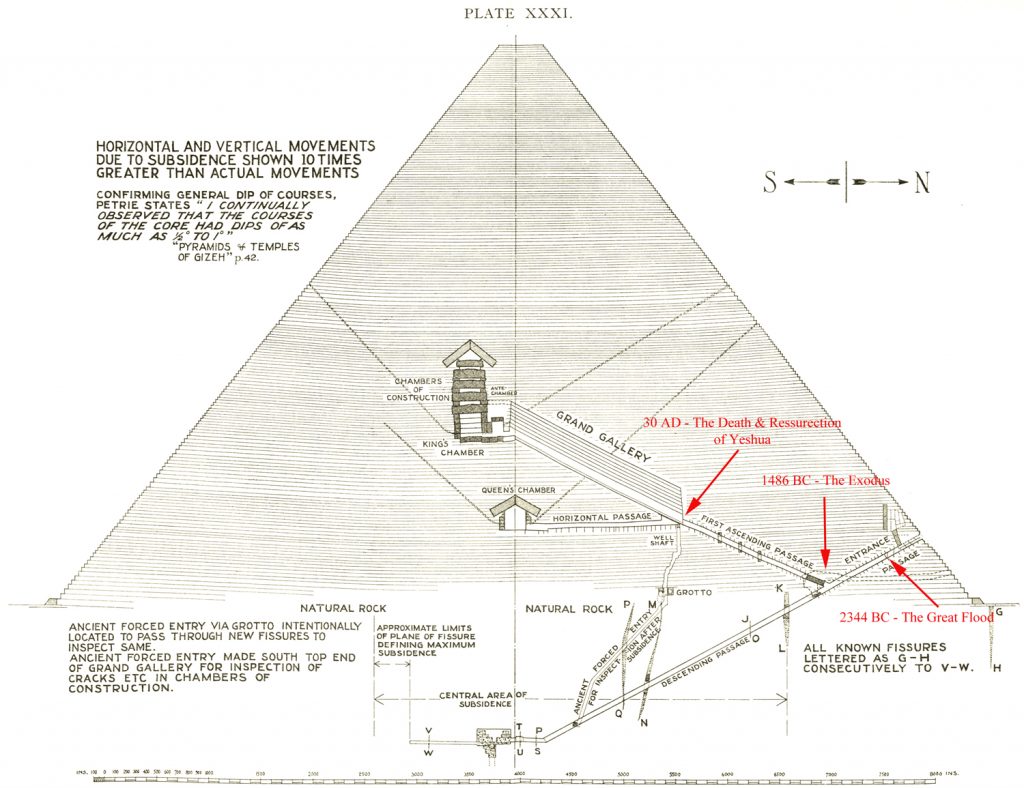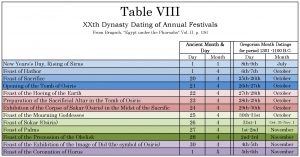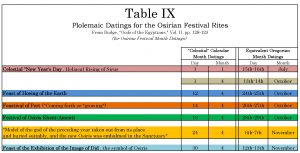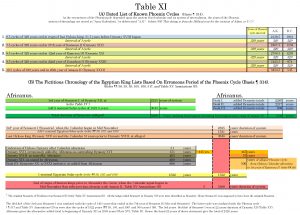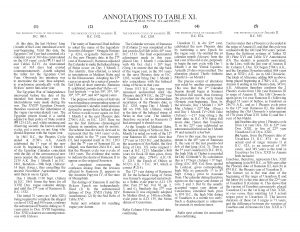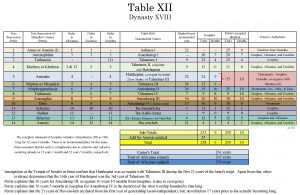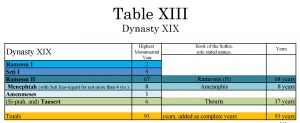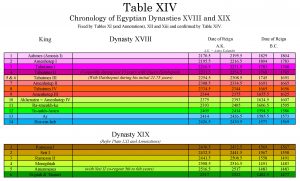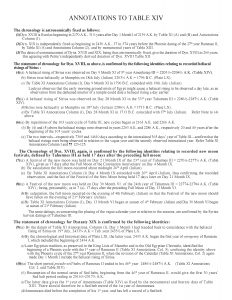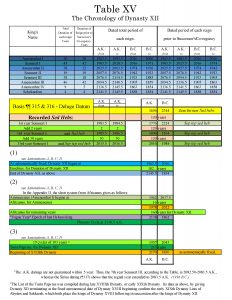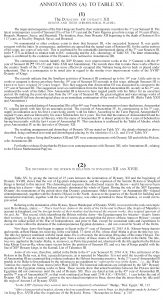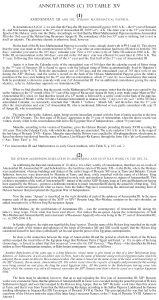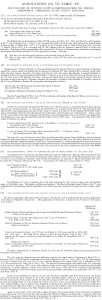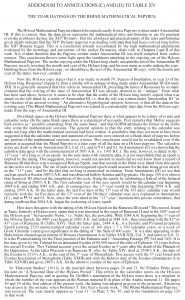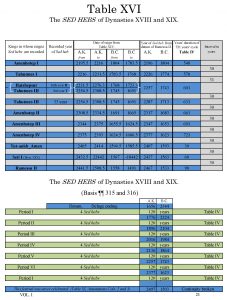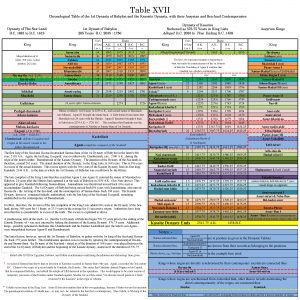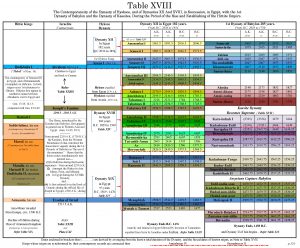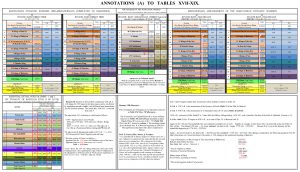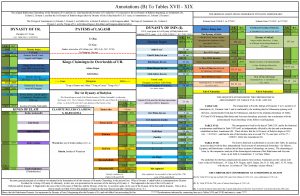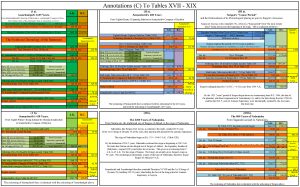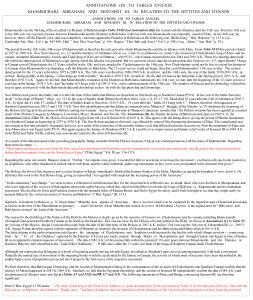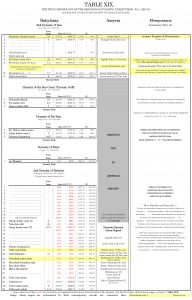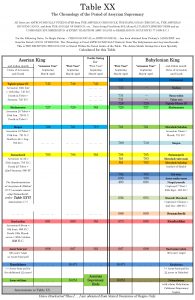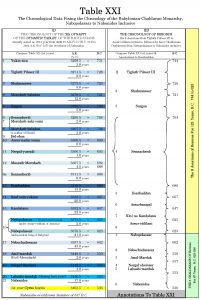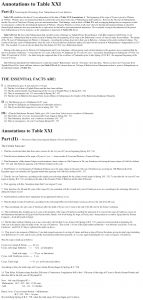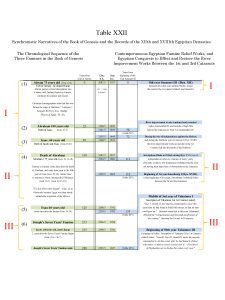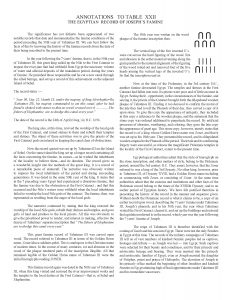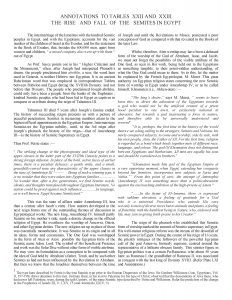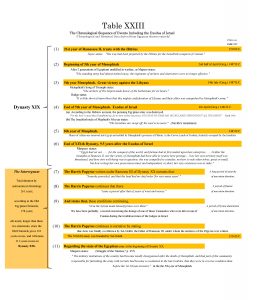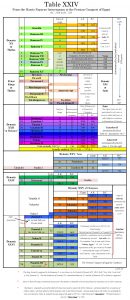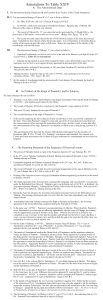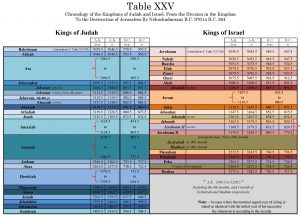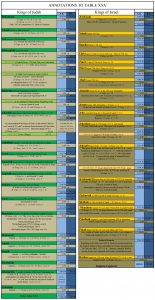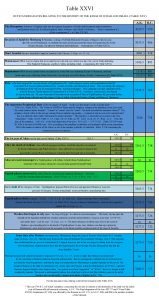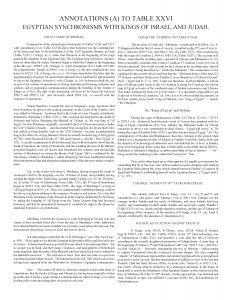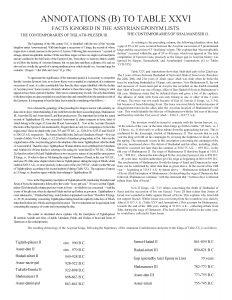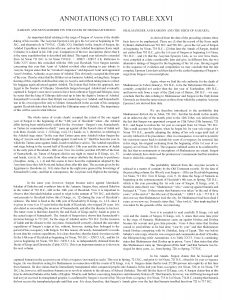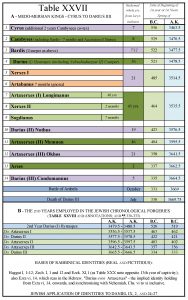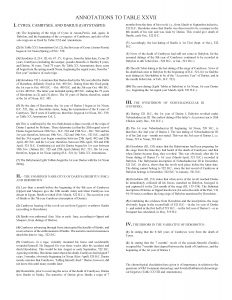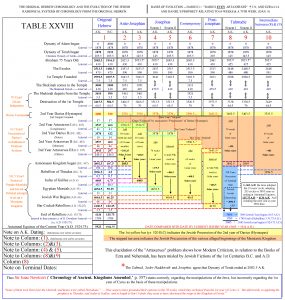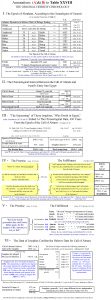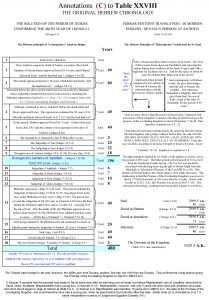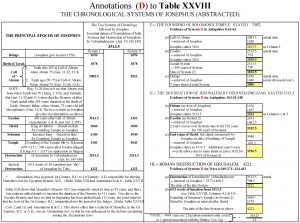 Can you name the Biblical holyday when the following words were spoken?
Can you name the Biblical holyday when the following words were spoken?
And he took bread, and gave thanks, and brake it, and gave unto them, saying, This is my body which is given for you: this do in remembrance of me.
Likewise also the cup after supper, saying, This cup is the new testament in my blood, which is shed for you. – Luke 22:19-20
If you said the Passover then you are correct. Yeshua spoke these words to his disciples at the Passover supper he celebrated with them the night before his crucifixion. Over the centuries as the early church distanced itself from its Biblical roots, the wine and unleavened bread of Passover became a tradition unto itself known as the Lord’s supper, holy communion, or the Eucharist. Yeshua death and resurrection during the Feast of Passover has also evolved into what most know today as the celebration of Easter.
When writing to the Corintian’s the apostle Paul made sure his readers understood that Yeshua’s death and resurrection were shadows and types of Biblical feast day of Passover.
Purge out therefore the old leaven, that ye may be a new lump, as ye are unleavened. For even Christ our passover is sacrificed for us: Therefore let us keep the feast, not with old leaven, neither with the leaven of malice and wickedness; but with the unleavened bread of sincerity and truth. 1 Corinthians 5:7-8 7
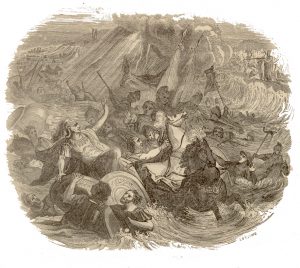
Egyptian Army overthrown in the Red Sea
No matter what you believe about the traditions of Passover, Easter, or the Lord’s supper, one thing is certain, all have roots in the Biblical story of Israel’s exodus from Egypt.
Unfortunately today many scholars doubt the veracity of the exodus story found in the Bible. This week I’d like to share with you some fascinating and informative resources that will help you better understand the exodus and the Biblical and historical facts upon which those events are based. Included in this week post:
-
- A review of a fantastic book and video which does a superb job of laying out the Biblical case for the exodus.
- A bit of personal history related to this subject which has influenced the direction of my life.
- The power of assumptions: The Champollion Assumption and its influence on Biblical and Egyptian chronology.
- A $2000 challenge
- A rare resource of historical documents related to the chronology of the Bible and Egypt. (For those who really love to dig into details of Biblical and Egyptian history.)
Patterns of Evidence
To start of with let me share with you a review of a book and video I read/watched this past week which I believe will help strengthen your faith in historical reliability of the Bible account of the Exodus. The book and movie is written Timothy P. Mahoney and is called Patterns of Evidence: The Exodus . As readers of this blog know I like to look at the prophecies and “patterns of evidence” in the Bible as it relates to Yahweh’s redemptive plan for mankind. In Mr. Mahoney’s book and movie you’ll find that he explores the “patterns of evidence” related to the Exodus story which results in some pretty compelling conclusions. This my review of Mr. Mahoney’s book.
Understanding the Exodus Patterns of Evidence
It’s one of those stories that has captured the imagination and stirred the spirit of countless generations with the dream of freedom. The Exodus account is such a galvanizing story that two of American’s founding fathers tried to capture the power of its message by placing its imagery on the initial design of the great seal of the United States.
Instead of the eagle, the all-seeing eye, and the pyramid we see today can you imagine if we had Benjamin Franklin’s initial design for the reverse of the seal showing “Moses lifting up his hand diving the Red Sea, and Pharaoh in his chariot overwhelmed with the waters.”, surrounding this image the words “Rebellion to Tyrants is Obedience to God”. Or how about Jefferson’s proposal of the “children of Israel in the wilderness, let by a cloud by day and a pillar of fire by night…”
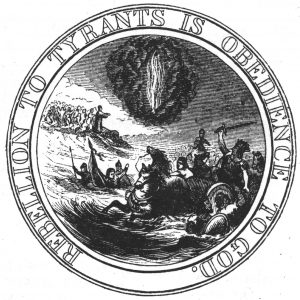 Quite vivid and powerful imagery to be sure, but have you ever wondered about the details of the story? The story of the Exodus is one of the foundational events which shaped Judaism and by its basis in the Jewish faith, Christianity as well. But did the Exodus really happen like the Bible describes? Did it even happen at all? If it did happen what does history and archeology have to say about the subject?
Quite vivid and powerful imagery to be sure, but have you ever wondered about the details of the story? The story of the Exodus is one of the foundational events which shaped Judaism and by its basis in the Jewish faith, Christianity as well. But did the Exodus really happen like the Bible describes? Did it even happen at all? If it did happen what does history and archeology have to say about the subject?
Since my teenage years I’ve had a great love for subjects related to Biblical history and Bible prophecy. I still remember the day nearly three decades ago when I was browsing the dusty shelves of a dark corner in the used bookstore of our town and I found a book about ancient Egypt, archeology, and the Israel’s famous escape from their chains of bondage. That book was in part the catalyst for a lifelong adventure exploring the Bible’s chronological and historical records that continues to this day.
I’ve read a lot of books about Israel and the Exodus since that day but none I’ve appreciated more than the book I’ve just recently read by Timothy Mahoney entitled Patterns of Evidence: The Exodus. The book is the personal story of Mr. Mahoney’s quest for the truth behind the tale of the Exodus.
Mr. Mahoney’s story begins many years ago with a crisis of faith. I’ll let Mr. Mahoney explain:
“I guess it was only natural that I would become a documentary filmmaker because true stories had much more power and influence over me than fiction. I had been raised as a Christian and remember hearing amazing stories from the Bible as a child, and I believed them. But as I grew older, I was challenged to lose those beliefs. I often wondered if there was any evidence to support them. After all, the stories were so fantastic. Now I just wanted to know the truth.”
So began an adventure which spanned the globe exploring the written and archeological evidence as well as the opinions of many of todays leading scholars, all focused on the goal of finding the truth about an event that has influenced millions of lives over the past several millenniums.
As a Christian with some knowledge of the history of the Exodus and the controversy surrounding it, I’ve still often struggled to grasp and even more so articulately all the complex issues related to the subject. I can tell you Mr. Mahoney and his team have done a masterful job with Patterns of Evidence: The Exodus.
Whether you’re a layman like myself trying to explain the particulars to your children or a teacher or pastor trying explore the subject with a larger audience, Patterns of Evidence organizes the information in a straight forward and congruent manner which is accessible and enlightening to both the novice and scholar.
Here are few examples of the many “patterns of evidence” covered in the book:
• Who was the Pharoah of the Exodus?
• Avaris: The City Beneath Ramesses
• The Egyptian Tomb of Joseph?
• Arrival Summary and Timeline
• Multiplication: Semitic Expansion in the Nile Delta
• Slavery: Mudbricks and Tomb Inscriptions
• The Ten Plagues
• The Admonitions of an Egyptian Sage: The Ipuwer Papyrus
• Conquest of Canaan at the Time of Ramesses?
• Discovering a Second Exodus Date
• Reestablishing the Bible’s Timeline
• Why Do Many Archaeologist Reject the conquest?
• Jericho: Did the Walls Come tumbling down?
• The Origins of Egypt’s Timeline
I must say that I only got about a quarter of the way through the book before I was so excited by what I was reading that I purchased the video to share with my family. The video was excellent! It distilled the information that I had been reading in the book into two hours of captivating video. It was so well done that even after two hours we were left wanting more.
I’ve since finished the book and I must say the book and video are a powerful combination. Thanks in large part to Mr. Mahoney organization of the subject into clearly explained “patterns of evidence” I now have a better understanding of the subject as well as a better framework upon which to continue my own exploration of the subject.
A $2000 Challenge
Winnie and I were so impressed with the quality and content of Mr. Mahoney’s book and video that we decided to support his next effort to share the Biblical patterns of evidence with the world. This effort is called Patterns of Evidence: Moses.
We’d like to encourage you to do the same. Here’s the challenge. Winnie and I will match readers of this blog pledges of support for Mr. Mahoney’s newest project for a total of up to $2000.00. Once you’ve read the book or watched the video of Patterns of Evidence: The Exodus. If you, like Winnie and I, find Mr. Mahoney effort worthy of your support then I encourage you to visit his Go Fund Me page for the Moses project here: Patterns of Evidence: Moses. Once you’ve made your pledge just let me know here in the comments section of this blog post or if you’d rather not share it here, you can email me at wstruse@the13thenumeration.com and Winnie and I will match your pledge up to a combine total of $2000.
Let’s help Mr. Mahoney’s worthy effort to bring the Bible’s ‘patterns of evidence’ to the world.
A Personal Quest for Answers
My own interest in the Biblical Exodus story and the facts behind it was sparked in my late teenage years in the dark dusty corner of that used book store I mentioned in my book review above.
Maybe I was making up for lost time. You see I had a extremely difficult time learning to read. It wasn’t until my early teenage years that I (thanks to the love an patience of my mother) was finally able to read well. In any case once I finally master the ability I became a voracious reader. I was raised in a Christian home and my mother regularly read to us the stories of the Bible. This developed in me a keen interest in all subject related to the Bible and its history.
So there I am in that corner of the old book section of our local used book store and I find a book with the intriguing title, The Great Pyramid: Proof of God by George Riffert. Okay, call me naïve or gullible but as I thumbed through that unusual book I was intrigued by the claims. The book was basically a short synopsis of a much larger work by Davidson and Aldersmith entitled, The Great Pyramid: It’s Divine Message.
One of the things about the book I found most intriguing was Mr. Riffert’s description of Mr. Davidson’s personal story. You see, Davidson in the early 1900’s was very knowledgeable in the field of ancient history especially as it related to Egypt. About this time the claims that the Great Pyramid of Gizeh was some sort of ‘Bible in Stone’ were raising great interest and incredulity in United States and Europe. Davidson, an agnostic was so challenged by these wild claims that he set out to disprove them. Mr. Riffert describes Mr. Davidson’s and his quest this way:
“His work compels acceptance among men of science because he himself ranks with the ablest in astronomy, mathematics, structural engineering and Eyptology. His investigation of the Pyramid began while he was get an avowed agnostic. The profound science divinely enshrined in the design and measurements of the structure so startled him that his agnosticism gave way to a gripping Christian faith. What was begun, therefore, in the urge of an unfriendly skepticism is now being continued under the inspiration of a scientifically established confidence in God.”
What I couldn’t shake after reading Riffert’s book was the question of what kind of ‘patterns of evidence’ as Mr. Mahoney might call it, could change the mind of such an unfriendly and knowledgeable skeptic like Mr. Davidson? What I wanted to know is what evidence did he uncover which gave him a “scientifically established confidence in God” and a new respect for the accuracy of the Biblical record?
Over the subsequent years I’ve read most of the books written on the subject of the Pyramid of Gizeh and I’ve learned that like all such things the perspectives on the subject ranged from absolutely crazy to the reasonable based in some version of real facts. Davidson and Aldersmith made their share of mistakes, theological errors, and erroneous claims but buried in their 500 page book is some of the most comprehensive synchronizations of the Biblical and ancient Egyptian chronology that I’ve ever had the pleasure of pursuing.
You see, part of the evidence that reshaped Davidson’s world view was that he believed the internal passageways of the Great Pyramid when measured in inches provided an accurate representation of the Bible’s chronology (1 inch = 1 year). In other words the Great Pyramid he believed, marked the exact day for the flood of Noah as given in the Bible. The point where the downward sloping passage inside the pyramid first turned upwards he believe marked the date of the Exodus in 1486 BC. And the first place in the internal passages of the Great Pryamid where one was not compelled to walk hunched over uncomfortably was the entrance into the Grand Gallery (a room 153′ long) which he dated to the year 30 AD, a point in Biblical history which just happened to marked the most likely date of the death and resurrection of Yeshua – where the burden of sin was lifted from mankind.
In any case, these “facts” compelled Mr. Davidson to spend the final decades of his life as a dedicated apologist of the Bible. Why I brought this up in todays blog post is because Davidson believed the Bible’s chronology was an accurate representation of history and he demonstrated why he believed Egyptian history and the Great Pyramid (as it related to the chronology of the children of Israel and the Exodus) confirmed the Biblical account. Mr. Davidson’s sensational claims about the great pyramid aside, his Biblical and historical chronological synchronisms are a wonderful and rare resource.
A Synchronization of Biblical, Egyptian and Ancient History
In the charts at the end of this blog post you’ll find many of Davidson’s charts and tables related to Biblical and Egyptian history. These charts come from his book written in 1924. I’ve modified the charts to help make the information more accessible and visually stimulating. I’ve also added BC dates so they can be related to Davidson’s A.K. (Anno Kalindri) dating system which has as its basis the 1st year of Adam as described in the Bible (MT Text).
I’ve spent many hundreds of hours working with these charts and tables over the years trying to get a reasonable grasp of the information they represent. It boggles my mind that someone long before the time of typewriters or modern computers could accumulate and organize such a great volume of material. Even if you disagree with Davidson’s conclusion about Egyptian chronology, I hope you’ll find some of his material useful in your own exploration of the subject. I know I have.
The Champollion Assumption
Before leaving the subject of the Exodus and its related chronology I could not help but mention a fascinating bit of history I learned from reading Mr. Mahoney’s book Patterns of Evidence: The Exodus.
Regular readers of this blog know about the powerful influence the Artaxerxes Assumption has had on 2nd temple era chronology in general and the 70 Weeks prophecy of Daniel 9 in particular. That simple well-meaning assumption meant to help prove the accuracy of the great prophecy in the Bible ended up stretching the Bible’s chronology by roughly 60 years and distorting the entire chronology of the 2nd temple era. This erroneous assumption has been so long accepted and by so many well meaning and respected scholars that today it is nearly impossible to get anyone to even consider the possibility of error, let alone the implications this error has for our eschatological world view.
Did you know that a similar chronological assumption was made about ancient Egyptian chronology and according to Mr. Mahoney it has ended up misplacing the events of the Exodus by nearly 200 years! Mr. Mahoney had this to say about the Champollion assumption:
“The fact is, Champollion revised the thinking of his day regarding Egypt’s history in order to fit his theory that Shishak and Shoshenq I were the same pharaoh. Standing on Champollion’s assumption were the founders of Egyptian Egyptology. Upon their shoulders stood the great scholars of the 20th century. And upon their shoulders are the scholars of today.” (Patterns of Evidence: The Exodus – Kindle loc. 4723)
Sounds familiar doesn’t it?
The irony of the Champollion Assumption is that it too was first made in a well-meaning effort to prove the accuracy of the Bible. Over the subsequent years this erroneous assumption was then used by modern scholarship to undermine the Biblical account. To this day even though the accuracy of Champollion’s assumption has been challenged, most scholars still hold to an inaccurate chronology based partially in that assumption.
So once again in the spirit of the Artaxerxes Assumption, I encourage you to challenge your assumptions and take some time to read or watch Mr. Mahoney’s Pattern’s of Evidence: The Exodus. If you’re intrigued by his claims and want to pursue the subject even further check out some of Davidson and Aldersmith’s charts below. But most importantly I encourage you to open your Bible’s and do your Berean duty and see if these things be so.
Maranatha!
|
|||||||||||||||||||||||||||||||||||||||||||||||||||||||||||||||||||||||||||||||||||||||||||||||||||||||||||||||||||||||||||||||||||||||||||||||||||||||||||||||||||||||||||||||||||||||||||||||||||||||||||||||||||||||||||||||||||||||||||||||||||||||||||||||||||||||||||||||||||||||||||||||||||||||||||||||||||||||||||||||||||||||||||||||||||||||||||||||||||||||||||||||||||||||||||||||||||||||||||||||||||||||||||||||||||||||||||||||||||||||||||||||||||||||||||||||||||||||||||||||||||||||||||||||||||||||||||||||||||||||||||||||||||||||||||||||||||||||||||||||||||||||||||||||||||||||||||||||||||||||||||||||||||||||||||||||||||||


